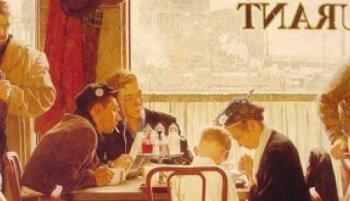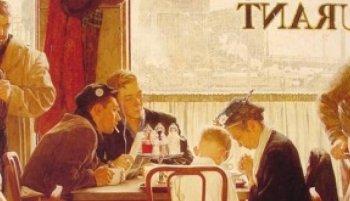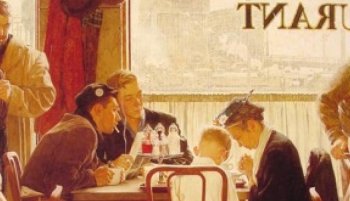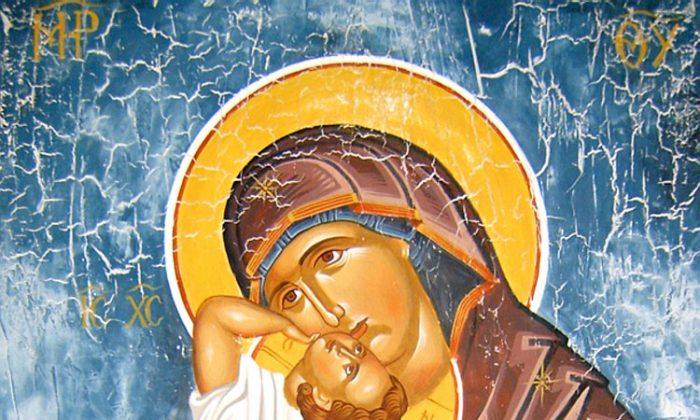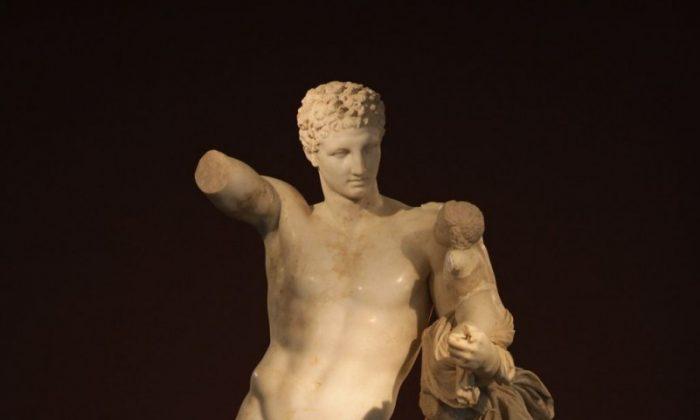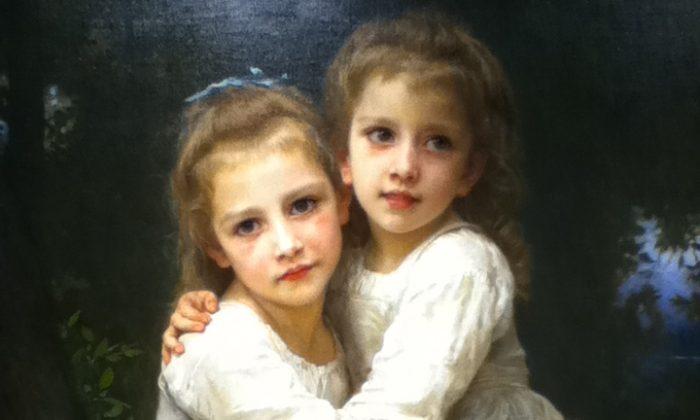Daylight bombing raids were pounding Germany. A steady stream of supply ships crossed the Atlantic dodging storms and German submarines. War Bonds were needed to keep the war effort going or the supply of provisions needed for the solders on the front lines would run out. The war was dragging on, and people were eager to see the war end.
In 1943, President Roosevelt gave a rousing and heartfelt speech. He outlined the four freedoms America was fighting for: freedom from want, freedom to worship, freedom from fear, and freedom of speech and expression.
Norman Rockwell was commissioned to do paintings depicting the four freedoms as part of a war-bond fundraising event. That war-bond drive brought in $135 million and became the most successful one during the war.
In his plan to paint the four freedoms, Rockwell said, “I’ll express the ideas in simple everyday scenes, take them out of the noble language of the proclamation, and put them in terms everybody can understand.”
The four freedoms were considered the best of Norman Rockwell’s work.
As I was touring the Norman Rockwell Exhibit at the Paine Art Center in Oshkosh, Wisconsin, featuring most of Norman’s 323 cover illustrations for the Saturday Evening Post, I was awestruck by his accomplishments.
Rockwell put his heart into every cover illustration. He wasn’t afraid to start a project completely over. He was extremely conscientious about his work, minding every detail, details that only he may have ever noticed.
Norman started his career with the Saturday Evening Post in 1916 and his long work with them lasted until 1963.
In 1943, President Roosevelt gave a rousing and heartfelt speech. He outlined the four freedoms America was fighting for: freedom from want, freedom to worship, freedom from fear, and freedom of speech and expression.
Norman Rockwell was commissioned to do paintings depicting the four freedoms as part of a war-bond fundraising event. That war-bond drive brought in $135 million and became the most successful one during the war.
In his plan to paint the four freedoms, Rockwell said, “I’ll express the ideas in simple everyday scenes, take them out of the noble language of the proclamation, and put them in terms everybody can understand.”
The four freedoms were considered the best of Norman Rockwell’s work.
The Saturday Evening Post
As I was touring the Norman Rockwell Exhibit at the Paine Art Center in Oshkosh, Wisconsin, featuring most of Norman’s 323 cover illustrations for the Saturday Evening Post, I was awestruck by his accomplishments.
Rockwell put his heart into every cover illustration. He wasn’t afraid to start a project completely over. He was extremely conscientious about his work, minding every detail, details that only he may have ever noticed.
Norman started his career with the Saturday Evening Post in 1916 and his long work with them lasted until 1963.
While others depicted the revulsion and heartbreak that came with the World War I, Rockwell illustrated scenes of children and innocence. During the Depression Era in the 1930s, he showed unity when the nation was tearing itself apart. He portrayed equality between blacks and whites, between the rich and the poor.
In the 1950s, Rockwell turned away from the affluence of the new modern lifestyle of fast-food, T.V. dinners, endless barrages of advertising, and the American dream of material satisfaction. He illustrated pictures of a college graduate entering a world, apprehensive, with newspaper headlines proclaiming war, and of economic woes. A halo around the young man’s head signifies innocence and hope.
Rockwell offered comfort and assurance. One in every three households in America received the Saturday Evening Post. It was a topic of conversation.
In Norman’s work, he loved to show us the positive side of life. “I was showing the America I knew and observed to others who might not have noticed,” Rockwell said of his paintings and illustrations.
The hues in his paintings took me back to my childhood. I remember long days of playing outside only to have it end, soaked in gold from a brilliant sunset. Gold, red, and brown were colors he used quite heavily.
Norman grew up in New York City but spent his summers out in the country. He said those times had been etched into his soul. Those summers, he recalled, “were filled of images of sheer blissfulness, one long, radiant summer.”
Rockwell spent most of his art career capturing those days.
One thought that kept popping up in my mind was as I took in the exhibit: “What would Rockwell highlight in our modern times?”
In Rockwell’s day, many things in society were less than ideal. He brought to light racial issues in some of his paintings; he wanted to expose society’s ills, but most often, he highlighted what made life good and focused on the positive. I’m sure he would have found the merits in our modern society as well.
Norman Rockwell offered morality against materialism, unity against division, and highlighted the positive against the destructive. Rockwell quietly drew the America everyone dreamed of. His illustrations bring us back to times of contrasts and highlight the past’s rights over wrongs.

